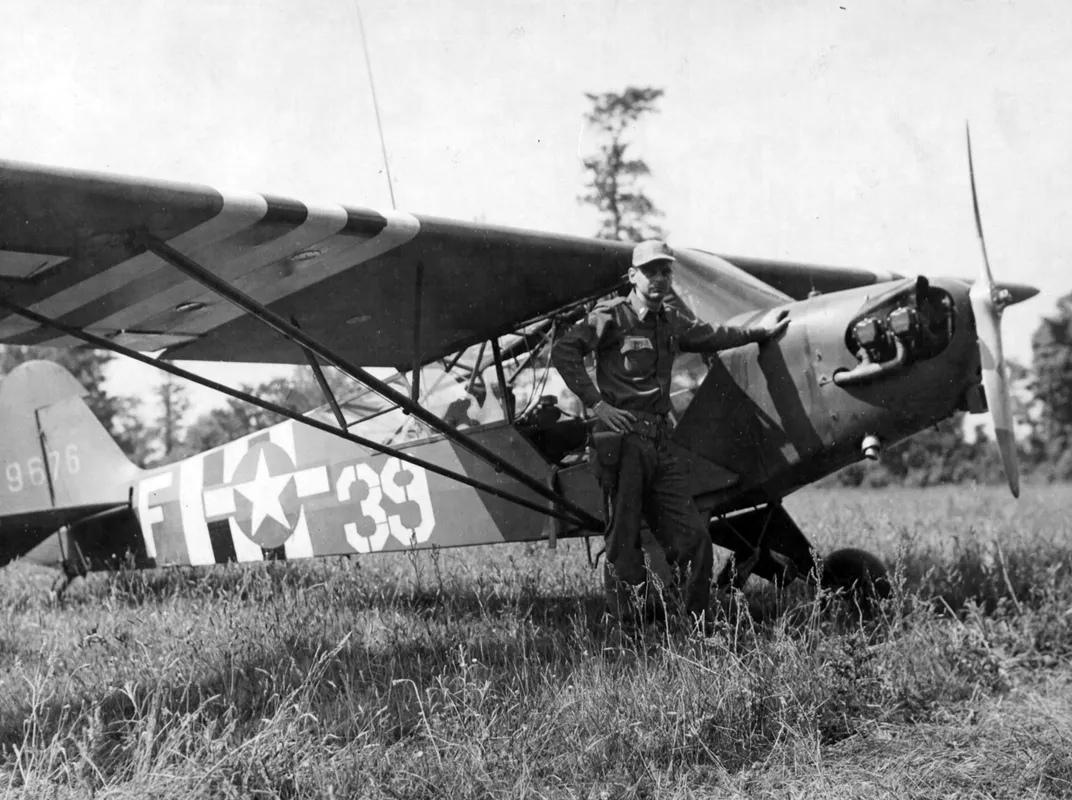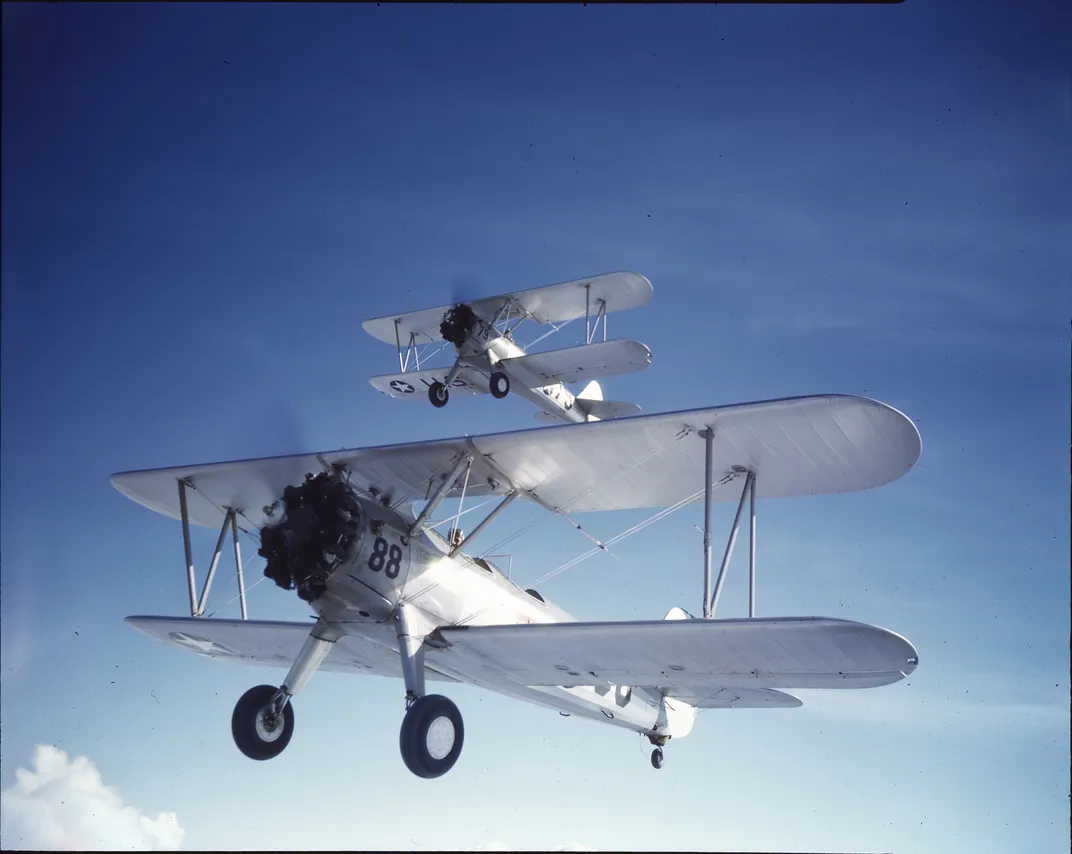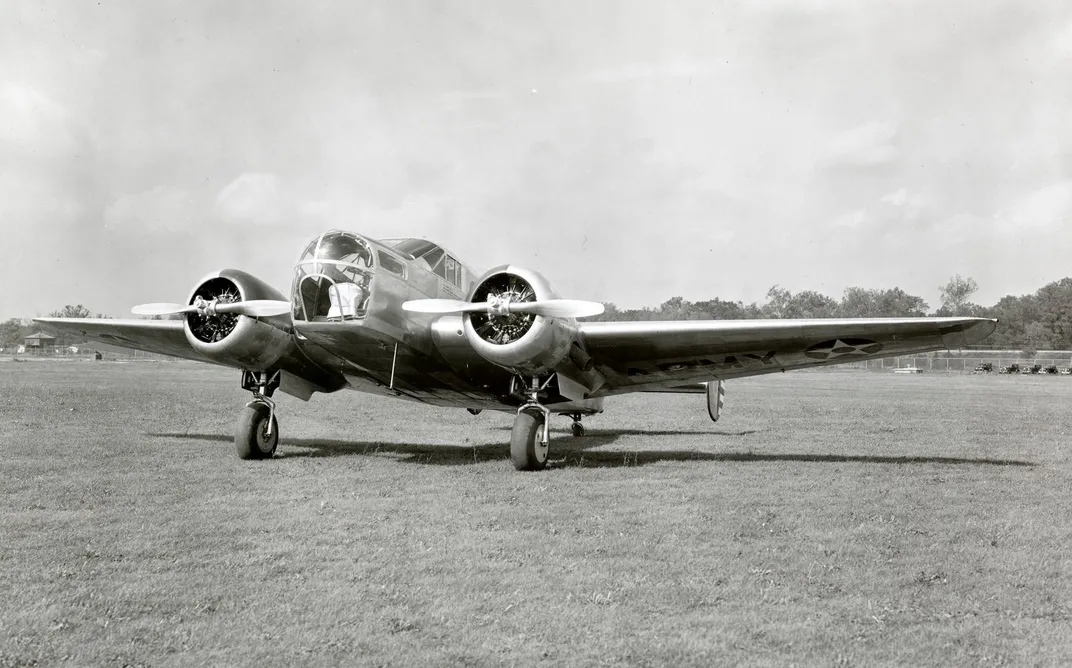The Basics: Four Trainers
/https://tf-cmsv2-smithsonianmag-media.s3.amazonaws.com/filer/00/a8/00a80f71-e21c-4a71-ade1-e0ec8e9e6b76/ww2_chronology_opener.jpg)
The U.S. Army Air Corps was a force of 21,000 airmen with 1,800 aircraft when General Hap Arnold became its chief in 1938. By the end of World War II, Arnold commanded 2.3 million people and oversaw 79,000 airplanes. In his memoir, Arnold recalled that the expansion began with a meeting at the White House on September 28, 1938. “Airplanes—NOW—and lots of them,” Arnold quoted the commander-in-chief, and he immediately began to obey the order, tapping prominent aviation leaders to create what would become the Civilian Pilot Training Program. By the time the program ended in 1944, it had trained 435,165 pilots. Among them were Senator John Glenn and the nation’s top ace, Richard Bong.
Three-quarters of the civilian pilots were trained in William T. Piper’s J-3 Cub. It could be powered by any number of engine types, ranging from 40 to 90 horsepower and propelling the bright yellow Cub to the blistering speed of almost 90 mph. Its generous wing area and a weight of less than 800 pounds gave it the characteristics of a powered glider, and it landed at less than 40 mph.
For military pilots during the 1930s and ’40s, the primary trainer was the Stearman biplane, and the PT-17 was the most numerous of the more than 10,000 built by the Boeing Stearman company. It sported a serious radial engine making more than 200 horsepower to haul its nearly one-ton empty weight around the sky.
Roscoe Brown was one of the many thousands who made a first flight in a Stearman. A member of the Tuskegee Airmen, a group of black pilots trained at Alabama’s Tuskegee Institute for military service, Brown’s World War II experience was not typical, but his progress through military trainers was. Of the Stearman, he recalls, “It was the first time you really got the feeling of flying. You would fly in the back, the instructor would fly in the front. It had fixed landing gear and the gear was narrow, so you had to be careful not to ground-loop when you landed it, which helped to build up your skill.”
Stearmans, like all good trainers, were stable and forgiving, even of the wildest mistakes. P-51 pilot Hess Bomberger remembered a classmate who was not properly belted in and, during negative Gs, floated out of his seat. He ended up astride the aft fuselage, where he punched two holes through the fabric for handholds. The instructor eventually landed safely, a minor miracle considering how much weight on the aft end the pilot represented.
Brown went from PT-17s to the “clunky” (his word) Vultee BT-13 for basic training, then on to the North American AT-6 for advanced work. Of the trainers, it’s the T-6 Texan he’s fondest of. “We used it for gunnery, and it was definitely a much better plane,” he says. “It was closer to what you were actually using in combat, a good formation plane. Like a racer, with retractable gear.”
Multi-engine pilots branched off to fly the twin-engine Cessna Bobcat or the Beech Kansan, which were also used to train flight crew such as navigators and bombardiers.
Although production initially lagged behind the demand for trainers, manufacturers quickly caught up. Piper built almost 20,000 J-3 Cubs, and North American cranked out more than 15,000 T-6s and their Navy counterparts, SNJs. Trainers may lack the glamour of combat aircraft, but these high numbers coupled with the affection pilots feel for their first airplanes have ensured that thousands of World War II trainers are still flying today.
Back to A History of WW2 in 25 Airplanes
Next: P-40 Warhawks and Flying Tigers
Last: B-29s Become the Ultimate Weapons


